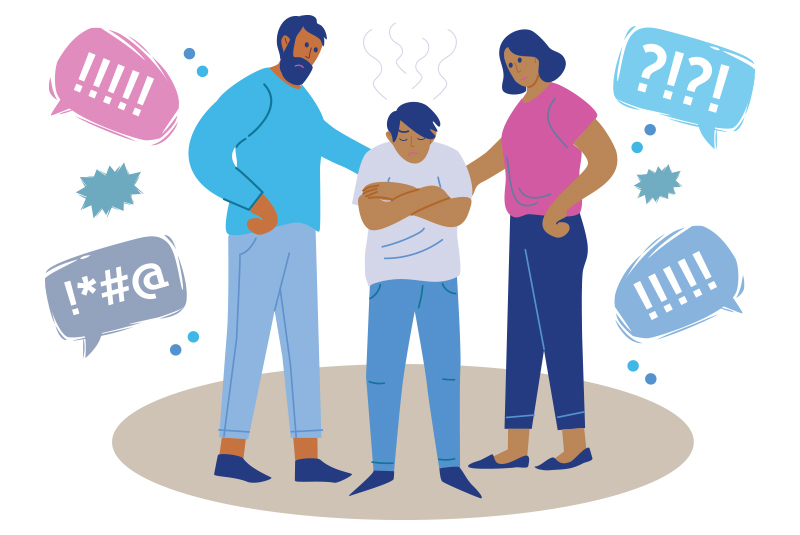Introduction Understanding and Addressing Asian Slurs
Asian slurs in particular have a long history tied to xenophobia, colonialism, and systemic racism. These derogatory terms not only offend and marginalize individuals but also perpetuate harmful stereotypes and contribute to broader societal discrimination.
Understanding the origins, impact, and ways to address Asian slurs is crucial in fostering a more inclusive and respectful society.
The History and Origins of Asian Slurs
Asian slurs have roots in historical events, including wars, immigration waves, and economic conflicts. Many of these slurs were created as tools of oppression, designed to demean and dehumanize Asian communities. During the 19th and 20th centuries, as Asian immigrants arrived in the United States, Canada, and Europe, they faced discrimination that was both institutional and social.
For instance, the Chinese Exclusion Act of 1882 in the United States was a direct result of xenophobic sentiments, leading to widespread use of derogatory terms against Chinese immigrants. Similarly, during World War II, Japanese Americans were subjected to internment camps while being labeled with offensive slurs that reinforced suspicion and alienation. Even in modern times, the COVID-19 pandemic saw a resurgence of anti-Asian rhetoric, with slurs and hate speech contributing to a rise in hate crimes against Asian communities worldwide.
The Psychological and Social Impact of Asian Slurs
The use of racial slurs has profound psychological and social consequences. Studies have shown that racial slurs can lead to increased stress, anxiety, and a diminished sense of belonging among targeted individuals. For Asian communities, these words reinforce harmful stereotypes—such as the “model minority” myth, which creates unrealistic expectations and minimizes the struggles of Asian individuals.
Moreover, slurs contribute to a culture of exclusion. They validate racist attitudes and behaviors, making discrimination appear more socially acceptable. In workplaces, schools, and public spaces, the use of Asian slurs fosters an environment of hostility and marginalization, often leading to lower self-esteem, depression, and social withdrawal among those affected. The impact extends beyond individuals; it influences entire communities by creating fear, distrust, and a sense of perpetual foreignness.
Media Representation and the Normalization of Asian Slurs
Media plays a crucial role in either perpetuating or challenging racial slurs. Historically, Hollywood and Western media have depicted Asians using derogatory stereotypes, often normalizing offensive language and imagery. For example, early American films frequently portrayed Asian characters as villainous or subservient, reinforcing harmful ideas that justified discrimination.
Even in modern media, casual use of slurs or stereotypical portrayals contributes to their normalization. Cartoons, comedy sketches, and online content have sometimes trivialized or mocked Asian cultures, making slurs seem acceptable under the guise of humor. Social media, while a powerful tool for advocacy, has also provided a platform for the rapid spread of racial slurs and hate speech.
However, increased awareness and activism have led to positive changes in media representation. More Asian actors, directors, and writers are gaining recognition, offering authentic and diverse narratives that challenge stereotypes. Campaigns against hate speech and racial slurs have also gained traction, urging media outlets and content creators to be more responsible in their portrayals of Asian communities.
Addressing and Combating Asian Slurs
Addressing Asian slurs requires a multi-faceted approach involving education, policy changes, and cultural shifts. Here are several strategies to combat their use:
- Education and Awareness
- Schools and workplaces should implement diversity and inclusion training that addresses racial slurs and their harmful impact.
- Historical context should be taught to raise awareness about the roots of these slurs and their consequences.
- Encouraging open discussions about racism and discrimination can help dismantle harmful stereotypes.
- Legal and Policy Measures
- Governments should enforce stricter regulations against hate speech, ensuring that racial slurs are not tolerated in public discourse.
- Social media platforms must enhance their policies to detect and remove hate speech effectively.
- Workplaces and educational institutions should adopt zero-tolerance policies against racial slurs and implement strict consequences for violations.
- Media Responsibility and Representation
- Media companies should be held accountable for using racial slurs and promoting stereotypes.
- Encouraging diverse voices in storytelling can help change narratives and provide more accurate representations of Asian communities.
- Public figures and influencers should use their platforms to condemn hate speech and advocate for positive change.
- Community Support and Advocacy
- Organizations and grassroots movements can play a vital role in raising awareness and providing support for those affected by racial slurs.
- Encouraging bystander intervention can help reduce the spread of racial slurs by fostering allyship and collective action.
- Promoting cultural exchange programs and dialogue can help bridge gaps in understanding and reduce racial biases.
The Role of Individuals in Creating Change
While systemic changes are necessary, individual actions also play a crucial role in addressing Asian slurs. Speaking out against racism, even in casual conversations, helps challenge harmful narratives. Self-education about different Asian cultures and histories fosters a deeper appreciation and understanding of diversity. Moreover, supporting businesses, artists, and creators from Asian communities contributes to positive representation and economic empowerment.
Additionally, engaging in conversations about race and discrimination with family, friends, and colleagues can help dismantle prejudices and build more inclusive communities. Encouraging empathy and understanding through storytelling and shared experiences makes it harder for slurs and stereotypes to thrive.
Conclusion
Asian slurs are more than just offensive words—they are deeply rooted in historical oppression and contribute to ongoing discrimination. Understanding their impact and actively working to eliminate them is essential for fostering a more respectful and inclusive society. By educating ourselves, advocating for policy changes, holding media accountable, and supporting affected communities, we can take meaningful steps toward reducing the harm caused by racial slurs. Addressing these issues requires collective effort, but every small action contributes to a larger movement toward equality and justice for all.





